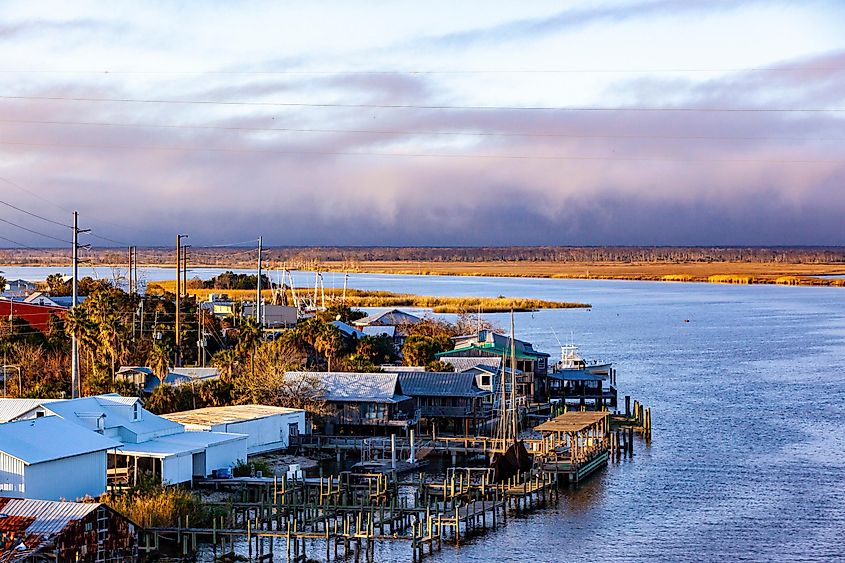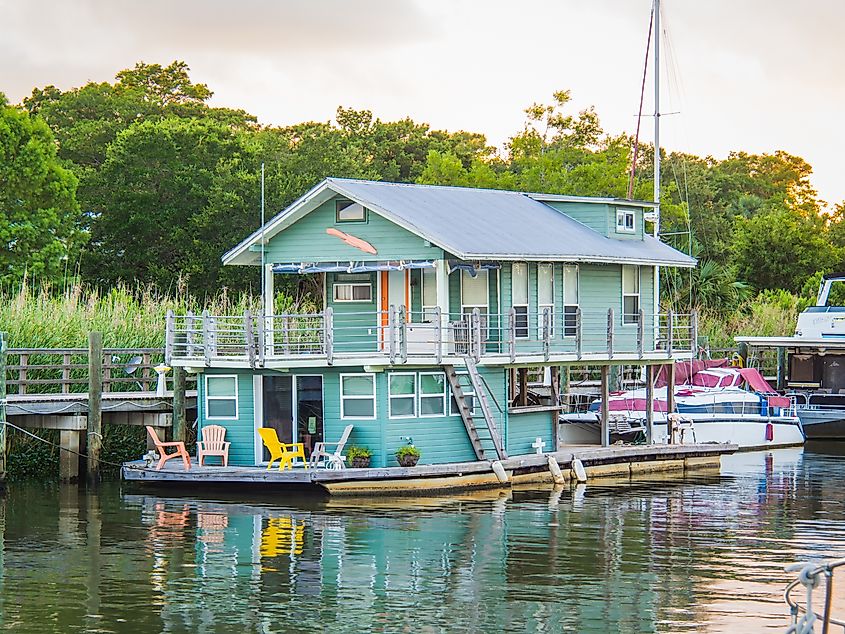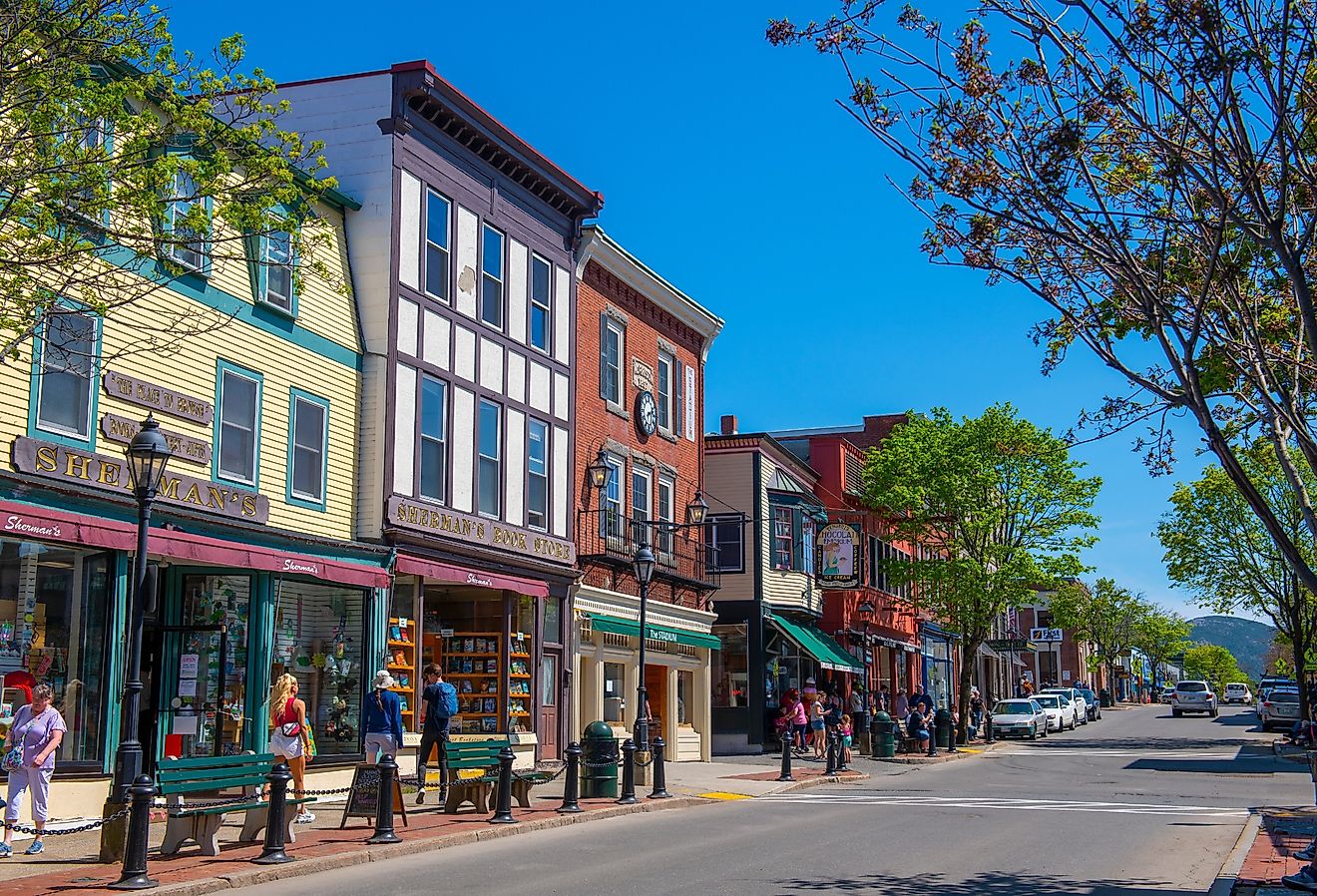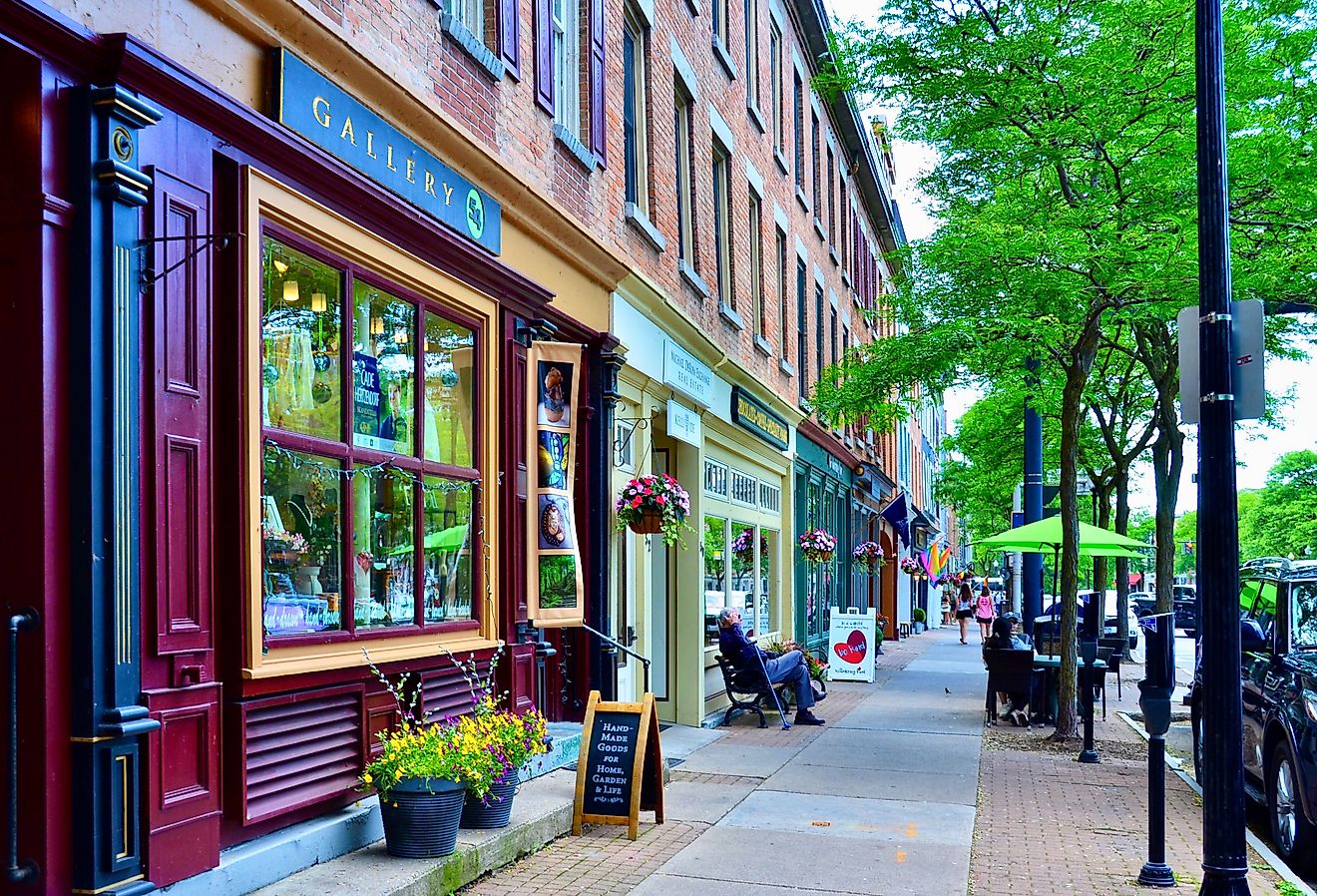
Apalachicola, Florida
Apalachicola, the county seat of Franklin County, is a small coastal town placed at the Apalachicola River’s mouth on the Apalachicola Bay in the northwestern portion of the US State of Florida. The name ‘Apalachicola’ is a combination of the native Hitchiti terms ‘apalahchi,’ which means ‘on the other side,’ and ‘okli,’ which means ‘people.’ However, as per the local people, the name also means ‘the land of the friendly people’ and refers to the native Apalachicola tribe who lived in the area and fondly called their homes “Apalach.” Once the Gulf of Mexico’s third-busiest port, the town is currently a major seafood-producing center.
Geography Of Apalachicola

Located at the mouth of the Apalachicola River, this charming port town having rich maritime history is at the heart of Florida’s Forgotten Coast. U.S. Route 98 is the principal highway that passes through the town and leads eastwards across Apalachicola Bay to Eastpoint and northwestwards about 59 miles to Panama City. The state capital, Tallahassee, is about 75 miles to the northeast of Apalachicola and can be reached via the U.S. Route 98 and U.S. Route 319 highways. Apalachicola covers a total area of 2.59 sq. mi, of which 1.9 sq. mi is occupied by land, and 0.69 is covered by water.
Climate Of Apalachicola
As per the Köppen Climate Classification, Apalachicola experiences a humid subtropical climate with long, hot, humid summers and short, cool winters. The hot season lasts from May 21 to September 29, where July is the year’s hottest month, having an average high temperature between 88°F and 75°F. The cold season lasts from December 4 to March 3, where January is the year’s coldest month, having an average low temperature between 46°F and 62°F. The town receives an average annual precipitation of 53.08 inches and has about 237 sunny days per year. The ideal time to visit this coastal town is from early April to mid-May and early October to early November.
History Of Apalachicola

From 1513 to 1763, the area, which includes the present-day town of Apalachicola, was ruled by the Spanish as a portion of Spanish Florida. The Spanish established several missions with the Apalachee people in the northeast and the Chatot people in the upper Apalachicola River and Chipola River valleys in the north. However, the Spanish established no such missions in the lower Apalachicola River valley during Spain’s initial occupation of Florida. After 1763, the area came under British jurisdiction as a portion of British West Florida, and therefore a trading post named “Cottonton” was established at the mouth of the Apalachicola River. The trading post continued to facilitate trading activities along the Apalachicola River even after 1783 when British West Florida was transferred back to Spain.
After the acquisition of the area by the United States and related developments in the adjacent states of Georgia and Alabama, the area started attracting more European-American residents for permanent settlement. The town was incorporated as “West Point” in 1827, and in 1831, the town was renamed “Apalachicola” by an act of the Florida Territorial Legislative Council. In 1849, the renowned physician Dr. John Gorrie discovered the cold-air process of refrigeration while performing experiments to lower the body temperature of yellow fever patients. During the American Civil War, the town was captured by USS Mercedita and USS Sagamore on April 3, 1862.
Population And Economy Of Apalachicola

As per the latest US Census, Apalachicola has a population of 2572 inhabitants with a median age of 51.2 and a population density of 1216 inhabitants per sq. mi. The top 5 ethnic groups in Apalachicola include White (Non-Hispanic) at 65.6%, Black or African-American (Non-Hispanic) at 28.3%, Other races (Hispanic) at 2.57%, White (Hispanic) at 2.37%, and Asian (Non-Hispanic) at 0.855%.
Apalachicola has a median household income of $52,076, a median property value of $194,000, and a poverty rate of 19.6%. The town’s economy employs about 1040 people in various large industries like Public Administration, Retail Trade, and Accommodation And Food Services. As a major seafood-producing center, the town is a homeport for several seafood workers. Over 90% of the state’s total oyster production in the past years was harvested from Apalachicola Bay. But, at present, reduced water flow and pollution of the Apalachicola River have led to the complete collapse of the oyster industry.
Attractions In And Around Apalachicola
Trinity Episcopal Church

Initially named Christ Church, this historic house of worship is situated at the corner of Avenue D and Gorrie Square in Apalachicola. The church was incorporated on February 11, 1837, by an act of the Florida Territorial Legislative Council. One of the nation’s earliest prefabricated buildings, the church’s construction began in 1837 and was completed in 1838. The building’s framework was shipped from New York City by a schooner and assembled with wooden pegs in Apalachicola. As the town’s “Historic First Church,” Trinity Episcopal Church is also the state’s sixth-oldest and second-oldest continuously serving church. On June 30, 1972, the church was added to the National Register of Historic Places.
John Gorrie Museum State Park

This Florida State Park is located a block off U.S. Route 98 highway in Apalachicola. The state park is dedicated to the renowned physician Dr. John Gorrie, who developed air conditioning and, in 1851, received the first U.S. patent for mechanical refrigeration. The state museum features exhibits about Apalachicola and Dr. John Gorrie's inventions. Directly across the museum on the state park grounds is Dr. Gorrie’s gravesite. A historical marker placed close to the gravesite explains the life and accomplishments of Dr. Gorrie.
Apalachicola National Estuarine Research Reserve

Established in 1979, the Apalachicola National Estuarine Research Reserve covers over 385 sq. mi area and protects both land and water areas of the Apalachicola Bay and Apalachicola River. The reserve also helps to maintain the pristine conditions and the economic value of the natural resources. The fishing industry directly supports the livelihood of about 60 to 85% of the native population, most of which is carried out in the reserve waters. Seafood landings worth $14 to $16 million are docked annually from the Apalachicola Reserve. Moreover, research projects in the Apalachicola Reserve highly prioritize the management of commercial fisheries and water quality monitoring programs.
In addition, to the above-mentioned tourist attractions, Apalachicola also hosts the Florida Seafood Festival on the first weekend of November every year. Considered one of the state’s oldest seafood festivals, it attracts thousands of seafood lovers to Apalachicola annually. Featuring extra-wide streets and charming seaside homes, the town’s historic downtown commercial district, with its many art galleries, boutiques, and locally-owned seafood cafes and restaurants, creates a friendly atmosphere, offering a memorable experience for everyone who visits this coastal town.











